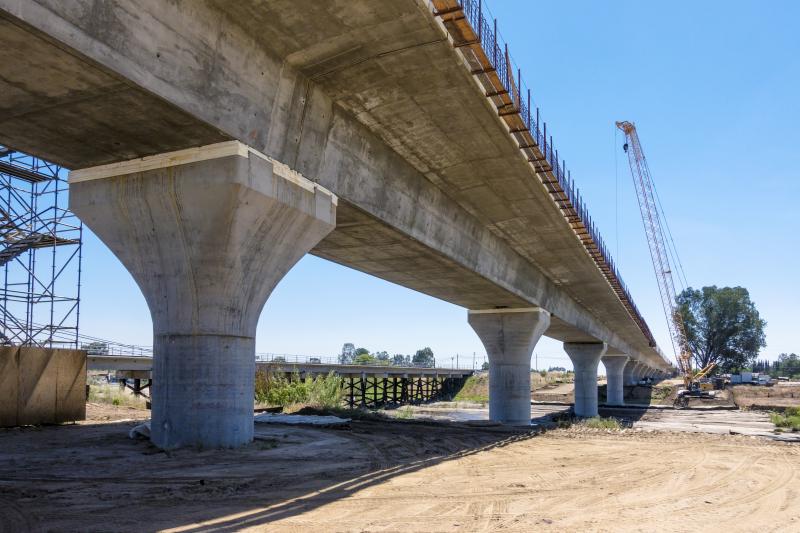
Despite witnessing the massive failure of the California high-speed rail project between Los Angeles and San Francisco, efforts are underway in Texas to replicate a high-speed railway between Houston and Dallas.
Although proponents claim that it will be funded privately rather than by a government entity, there are efforts underway to require taxpayers to foot the bill for what could be another massive and failed infrastructure project. The current projected cost of the line stands at 15 to 18 billion dollars, but that number could easily balloon in the same way that the California line has. This wouldn’t be disastrous but not for the possibility that if rail proponents get their way, taxpayers could be left on the hook for many of these costs.
Click here to read ATR’s op-ed in the Washington Examiner, “Texas, don’t even think about importing California’s rail disaster.”
With under 400 million dollars raised to date, through loans largely provided by a bank backed by the Japanese government, taxpayers should remain skeptical of claims that they won’t be paying for the project in some way. Additionally, an acknowledgement from Texas Central on their website that “the project will explore all forms of capital available to finance debt for the project including federal loan programs like RRIF and TIFIA” seems to echo sentiments held by a French competitor who also submitted a bid, SNCF, that a high-speed rail exclusively funded through private means is unrealistic.
These loans, specifically Railroad Rehabilitation and Improvement Financing (RRIF) loans lack taxpayer protections, according to a 2017 study of the Texas Central Rail project by the Reason Foundation. Reason concluded that “the project will inevitably have to be bailed out by the taxpayers of Texas.”
There is also lingering ambiguity over whether Texas Central even qualifies to receive federal funds under the RRIF due to the fact that it may not operate a railway under the definitions and requirements laid out in the program. Ambiguity about the definition of a railroad, which must have interoperability with other systems may disallow the Texas Central Railway from being entitled to federal eminent domain authority as well.
Being able to repay publicly-backed loans relies on two key factors: average capital cost per mile and ridership. Using the $12 billion minimum cost projected Texas Central for construction of the line, we can calculate an average capital cost of $50 million per mile. This figure greatly exceeds the costs of the only two high-speed rail lines in the world, Tokyo-Osaka and Paris-Lyon, which actually turn a profit. The projections for ridership of 5 million passengers by 2029 and 13 million by 2050 provided by Texas Central are much lower than the current ridership of the aforementioned lines. Once again, these are the figures provided by Texas Central, not yet subjected to serious public scrutiny. For some context, estimates for the California project were borderline fraudulent.
From a taxpayer-investment perspective, there is reason to doubt a real need for high-speed rail in the Dallas to Houston corridor. This area has high rates of car ownership, small transit systems and percentage of transit usage, along with low population density when compared to other major U.S. regions. This could spell trouble for a project which will require a high level of adoption to be successful. As for a desire for such a project, Texans should look how desire to continue construction on the high-speed rail in California has dwindled with estimated costs climb. It was actually the Democrat Governor of California who essentially gave up on the project, even before the Trump administration began to claw back some of the money allocated for it under the previous administration.
Should this project move forward, taxpayers must be protected against risky loans and loan guarantees and at a minimum, federal regulators should refuse to back the project without additional verifiable data on ridership projections. Even if this project can be entirely privately financed, there remain significant concerns about the use of eminent domain for the construction of the line and its stations.
These projects often turn into boondoggles. To avoid such a disaster, it might be best to just kill the Texas Central Rail project before it ever leaves the station.

